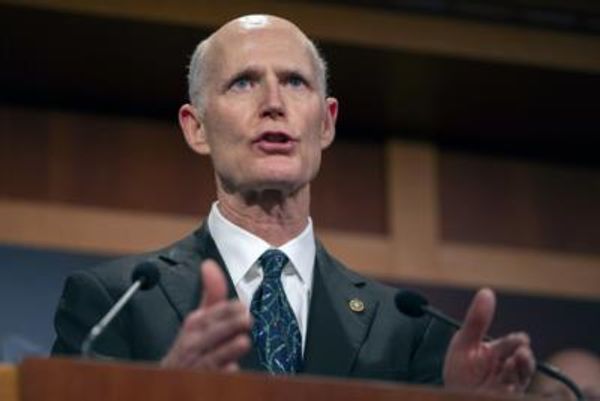
In modern times – at least since the mid-19th century – the Old City of Jerusalem has been conventionally described by foreigners as consisting of four distinct quarters: Muslim, Christian, Jewish and Armenian. Matthew Teller, in his highly perceptive and readable book, tells a very different story.
Teller, a freelance journalist and documentary-maker, combines millennia of Jerusalem’s history with insightful interviews with its residents, weaponising that unusual approach to present a subtle portrait of the current reality at the heart of the world’s most intractable and divisive conflict.
The Old City is still enclosed by 16th-century walls built by the Ottomans and only started to expand beyond them in the 1860s when Britain, then the rising global superpower, began to take an interest, reinforced by its Protestant Christian identity. It occupied Palestine towards the end of the first world war, issuing the Balfour Declaration in November 1917, a landmark achievement for the nascent Zionist movement.
Much has changed since then, especially for the 32,000 Palestinians (about 90% of the Old City’s population) who now reside in what Teller defines as nine quarters. These include different denominations of Christians, African and Sufi Muslims, Gypsies (known as Rom) and Israeli Jews (largely Orthodox) who live in far better conditions with the backing of their controlling state. Israel claims Jerusalem as its capital, though that is not recognised by most countries (except, most notably, the US), which maintain their embassies in Tel Aviv.
In English, a quarter is a place where “others” live. In Arabic, though, it has a very different conceptual framework. Hara can mean both a street and a small neighbourhood. In 1495, one historian identified 18 harat (plural) in Jerusalem, all in what is now known as the Old City. Another counted 39 in an earlier period.
The main religious sites are the Haram al-Sharif, or the al-Aqsa mosque compound, the site of the prophet Muhammad’s ascent to heaven from the Dome of the Rock and alongside the Haram, the Western Wall by the Temple Mount, which is of huge significance to Jews. Important churches include the Holy Sepulchre, where Jesus was crucified and where rivalry between Ethiopian Orthodox monks and Egyptian Copts is rife.
But this story is not just about holy places, shrines, convents, synagogues and devout pilgrims and missionaries exploring the 14 stations of the cross. It is also about narrow alleyways between markets, lined with restaurants, souvenir shops, tourists and guides and, above all, the fascinating story of ordinary life in the past and present guided by trilingual street signs. “A thorny path runs alongside its joys,” as a friend told the author.
Each of the Old City’s eight gates provides insightful tales. The Damascus Gate – Bab al-Amoud (gate of the column in Arabic, referring to a Roman column that hasn’t existed for more than a thousand years) is the main transit point between the Old City and (still largely) Palestinian East Jerusalem. In Hebrew, it is called Sha’ar Shekhem (“Nablus gate”, Nablus being the first major city north of Jerusalem).
The Jaffa Gate is known in Arabic as Bab al-Khalil – the “Hebron Gate” (Hebron is the largest West Bank town south of Jerusalem). It is called Sha’ar Yafo in Hebrew, too, Yafo being the Hebrew name of Jaffa. The author, who has strong personal opinions, finds it “the most disquieting corner of a disquieting city”, which symbolises the aspirations of outsiders who seek to dominate the lives of Jerusalem.
Take the role of Charles Ashbee, the adviser to the British governor of the city in 1917, Ronald Storrs. Ashbee was the main founder of the Arts and Crafts movement, was totally against modernisation and adored the medieval walls. He ordered the demolition of shops and cafes surrounding them, created walkways along the ramparts and green lawns on the side. He also loathed the clock tower that the Ottoman sultan Abdulhamid II, built above the Jaffa Gate in 1908.
“British rule was set on creating, then entrenching, a division between the walled ‘Old City’ – the idealised Jerusalem of imagination – and the altogether less desirable ‘New City’ outside the walls,” writes Teller in a key passage. “Today, Israeli policy adapts the same idea, using new walls – this time of concrete – alongside tools such as economic and demographic manipulation to further divide Jerusalem and cut the city off from its Palestinian hinterland.”
Teller repeatedly defines himself as a “non-believer”, which is why he is able to write about Jerusalem in such a robustly secular and iconoclastic way. (He even uses inverted commas around the conventional term Holy Land.) But he still manages to exude affection for it and compassion for the people who live there.
About 2,000 Jews were expelled during the 1948 war by Jordanian troops who conquered the Old City and the rest of East Jerusalem. For 19 years, minefields and barbed wire separated both sides of town. Some Jews were able to go back after what Israelis call the six-day war. By contrast, 28,000 Palestinians were also expelled from western suburbs and nearby villages, including Deir Yassin, site of the notorious massacre in April 1948. None have been able to return home.
The Jewish Quarter now feels very different from the other areas of the Old City. It is mostly modern, upmarket and gentrified, built since Israel’s stunning victory in June 1967, when the slummy Moroccan area next to the Western Wall was speedily demolished. Arabic is not heard there and armed Israeli police checkpoints are absent. But the police have for decades recruited Palestinian informers to keep an eye on their own neighbours.
East Jerusalem as a whole, formally annexed by Israel in 1980, has attracted attention in recent times because of the planned eviction of Palestinian residents from the Sheikh Jarrah neighbourhood by Israeli settlers. That provided the spark that ignited last May’s 11-day war with Hamas in the Gaza Strip, which only reinforced the bleakness of the continuing “one-state reality” with unequal rights for Israelis and Palestinians.
It’s good and timely to focus again on the Old City and its complicated past and turbulent present. “This city,” as Teller writes, using a brilliant simile, “wears its history like a teenager wears a school uniform – joyless.”
• This article was amended on 8 March 2022. An earlier version said “Israel claims Jerusalem as its capital, though that is not recognised by most countries (except the US), which maintain their embassies in Tel Aviv.” That has been changed to say: “most notably the US” as Honduras, Guatamala and Kosova also recognise Jerusalem as the capital.
Nine Quarters of Jerusalem: A New Biography of the Old City by Matthew Teller is published by Profile Books (£16.99). To support the Guardian and Observer order your copy at guardianbookshop.com. Delivery charges may apply






